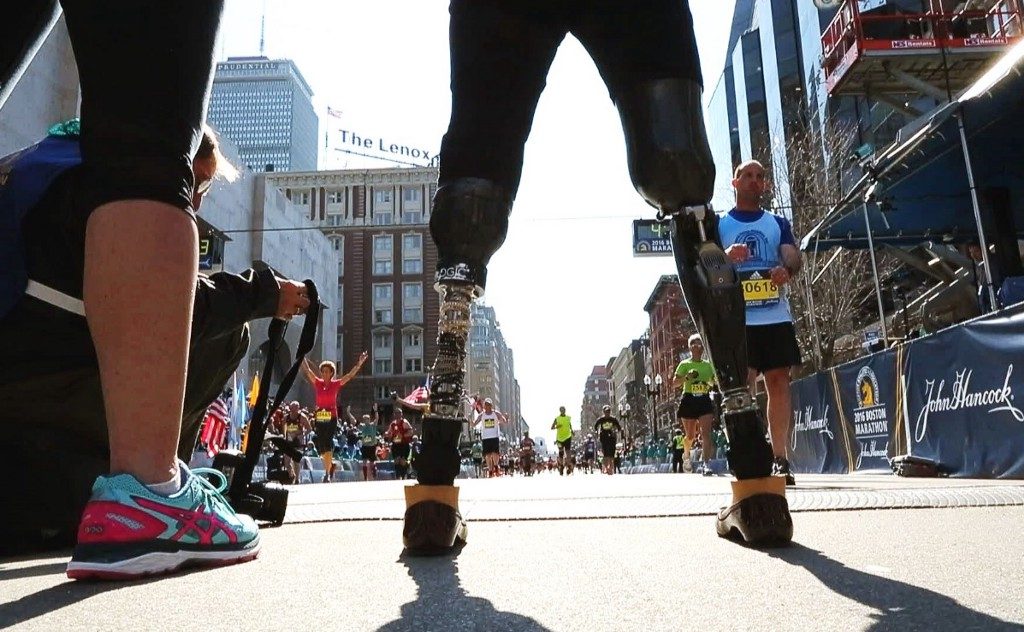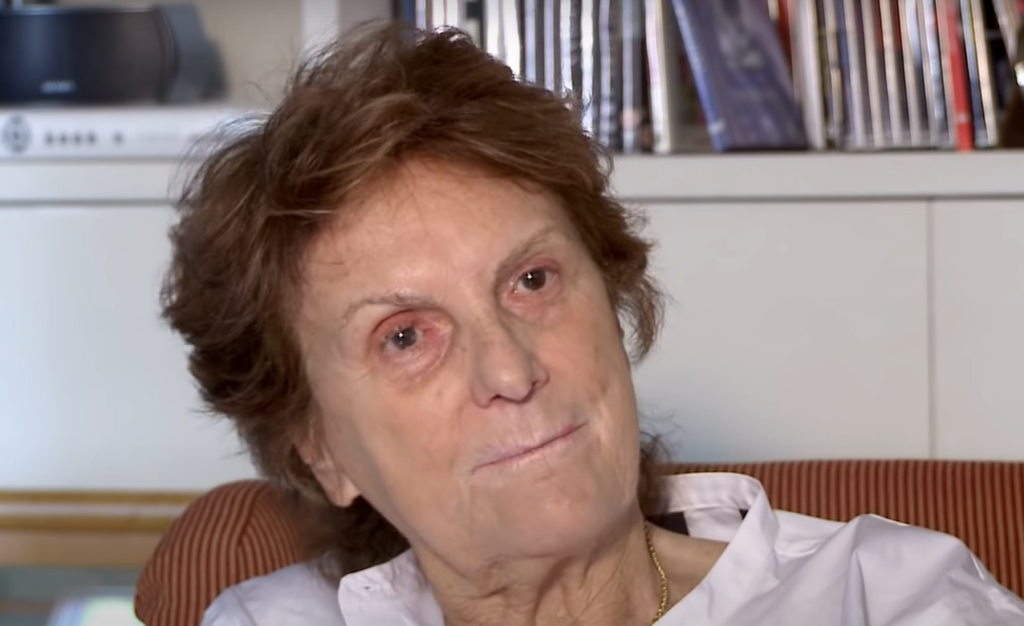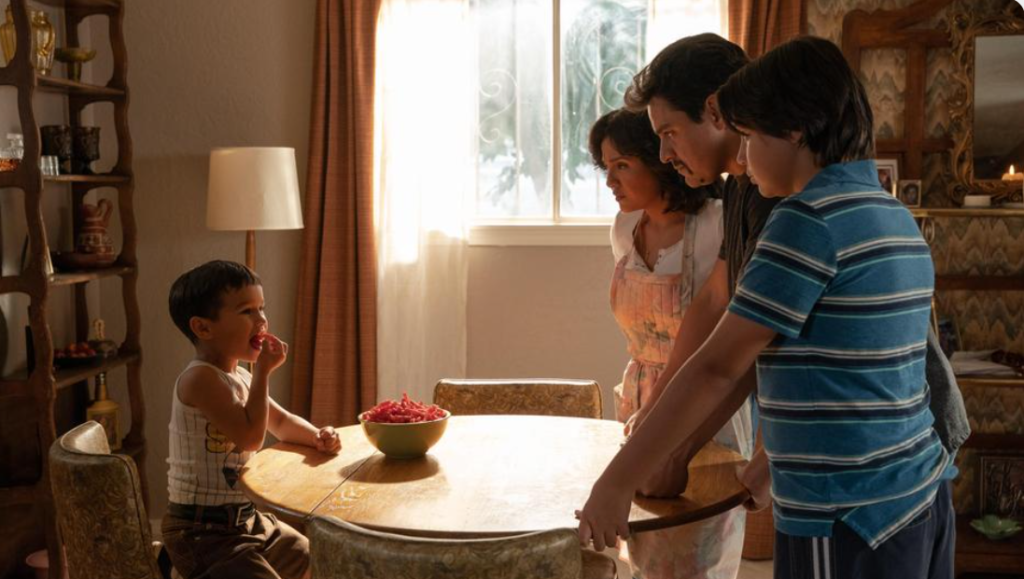Hamptons Film Fest 2016 Women Directors: Meet Ricki Stern and Annie Sundberg — “Marathon: The Patriots Day Bombing”
Ricki Stern and Annie Sundberg’s credits include “Joan Rivers: A Piece of Work,” which premiered at the 2010 Sundance Film Festival where it won the U.S. Documentary Prize for Best Editing, the 2008 Emmy-nominated documentary feature “The Devil Came on Horseback,” and the 2007 Emmy- nominated feature “The Trials of Darryl Hunt.” Their most recent films include “In My Father’s House,” “Knuckleball!” and “Burma Soldier.”
“Marathon: The Patriots Day Bombing” will premiere at the 2016 Hamptons International Film Festival on October 7.
W&H: Describe the film for us in your own words.
RS&AS: “Marathon” began as a close exploration of what happened on April 13, 2013 at the Boston Marathon, and for us, became a deeper meditation on courage, resilience, and community.
Set against the police and FBI’s very public effort to capture the bombers and bring them to justice, the film creates an intimate story of the perseverance and bravery of three survivor families facing the long-term aftermath of terrorism.
W&H: What drew you to this story?
RS&AS: We had seen “one year later” news projects that were about Boston Strong, but, as one of our film subjects puts it, “The pieces felt very black and white and left out the grey.” The anniversary films expressed a desire to celebrate a welcomed recovery, a relief that the people of Boston had reclaimed a certain necessary part of their collective identity. But for the survivors of the Boston attacks there is a profound long term impact on each of them and their families.
This film was an opportunity to explore the grey zones — how people navigate grief, healing, relationships, and identity in the wake of terrorism.
W&H: What do you want people to think about when they are leaving the theater?
RS&AS: In sharing their experiences, our film subjects felt strongly about giving others who are facing similar pain, or who may in the future, the courage to fight in the face of unending setbacks, and the strength to allow themselves to feel hope.
What the audience brings to this film will inform their response, but as filmmakers we learned so much from the survivors about resilience and grace. We hope those lessons carry on to each person who sees this film.
W&H: What was the biggest challenge in making the film?
RS&AS: From the beginning, we were challenged by the sheer scope and reach of the story of the Boston bombing. It had become an international story, so finding a point of entry and focus was our first creative decision. By watching as much footage as we could find online, listening to radio shows, and reading long form stories from the Boston Globe, we were able to put together a long list of potential storytellers and main subjects for the film.
Ultimately, we narrowed our focus to three survivor families who were not only physically suffering from the attack but who were wrestling with the complicated emotional impact of surviving.
Also, as we navigated the film structure, we thought carefully about how to interweave the facts of what happened with the personal narratives of the survivors. We wanted to balance the storytelling to bring the long-term impact into focus.
So often, it’s the perpetrators of criminal acts who live on in the press and our collective memory. The names of those who saved lives, aided in the long months of recovery, and supported the injured are the names and stories we should remember.
W&H: How did you get your film funded? Share some insights into how you got the film made.
RS&AS: The film was made for HBO in association with The Boston Globe. It began with a conversation. The opening arguments had just been delivered in the Boston Marathon Bombing trial and Sheila Nevins, President of HBO Documentary Films, was surprised that the story was buried deep inside the US section of The New York Times. She felt that it was an important national story and deserved to be on the front page.
As we talked further, sharing what we knew about the attacks in Boston, we all wondered what had happened to the survivors, the people who had simply been there that day. Sheila felt, and we agreed, that the outcome for these survivors, and the everyday heroes among them, was also a national story and one that hadn’t fully been told.
W&H: What does it mean for you to have your film play at HIFF?
RS&AS: In light of the recent attack in New York City — with its eerie similarities to what happened at the Marathon — we are thankful to have the opportunity to bring Boston survivors to the Hamptons International Film Festival audience. Their stories of struggle and perseverance will hopefully resonate with all audiences as we face the challenge of everyday terrorism.
W&H: What’s the best and worst advice you’ve received?
RS: The best advice I ever received was from my dad and mom who told me to “try.” If you don’t try then you certainly have failed, but if you try and fail then at least you’ve tried. It seems silly, but fear of failing can be paralyzing. I can’t think of the worst advice I’ve received — I try to only remember the positive.
AS: I remember a wise suggestion to listen more than you speak, and to stay silent after you believe your subject has finished answering your question. In that unsure silence, when you are waiting, you often get gold. Worst advice? I did get some pretty lousy advice about having to make a choice about a film path. People need to define you — are you a nonfiction filmmaker or a narrative filmmaker? The goal is to realize work that is an extension of you and your vision, and that drives you creatively: these things change over the course of a creative career.
W&H: What advice do you have for other female directors?
RS: I think female directors will hopefully just think of themselves as directors and never let gender stand in the way of their goals. Be yourself, whether that is soft-spoken or noisy. In the end, being true to myself, living life ethically, working hard, not complaining, and getting back up when I have fallen down is how I try to live my life. Think of the work not in front of you — and not behind you — but in the moment and try to find happiness in that.
Build a strong community of filmmaking peers around you and create your own work together. Don’t be afraid to ask questions. It’s okay not to have the answers — one thing I love about having worked for so long in NYC is the community of filmmaking experts that we can go to for support. Finally, I would say to remember that your opinion matters. It’s your film, so if you like something or disagree with something, it’s not a majority vote. You are the director: have confidence in yourself.
AS: Ditto that.
W&H: Name your favorite woman-directed film and why.
RS: It is hard for me to think of any favorites because I tend to like a lot of different films for different reasons. I like Jane Campion’s films “Sweetie” and “The Piano.” I like “Chocolat” by Claire Denis and “Europa Europa” by Agnieszka Holland. I like period films that are about subtle characters but I also love war films and action-adventure films. I like “The Hurt Locker” and “Point Break” by Kathryn Bigelow. “Point Break” is just plain enjoyable to watch. I loved the characters in “The Hurt Locker,” and the naturalistic feeling of being at war with them. I like “Lost In Translation” by Sofia Coppola — the tone, atmosphere, and subtle character moments. I also like “Salaam Bombay!” by Mira Nair. There are probably many more films I have liked by women directors — I just don’t classify them in my head as being directed by women.
AS: I also don’t tend to remember films by the gender of the director, but women filmmakers who have made work I love include some overlap with those on Ricki’s list: “Wendy and Lucy” or anything by Kelly Reichardt; “Lost in Translation” by Sofia Coppola; “Fast Times at Ridgemont High” by Amy Heckerling; “An Education” by Lone Scherfig; “Boys Don’t Cry” by Kimberly Peirce; “Jeanne Dielman, 23 Quai du Commerce” by Chantal Ackerman; “Stories We Tell” by Sarah Polley; “The Hurt Locker” by Kathryn Bigelow; and “The Square” by Jehane Noujaim.
W&H: Have you seen opportunities for women filmmakers increase over the last year due to the increased attention paid to the issue? If someone asked you what you thought needed to be done to get women more opportunities to direct, what would be your answer?
RS: It’s hard to really know if opportunities for women filmmakers have really increased. What it seems like is that when there is a woman filmmaker who has had some success she is lauded and becomes a symbol for change. Women need to continue to move into the positions of power in the industry by running businesses and heading companies. When women start to play an equitable role in the success of Hollywood, I think we will see things change.
AS: I agree with what Ricki says but want to add that I also think we need three things: we need to find more people willing to put their money into women-helmed and women-led projects; we need to have more women-driven projects supported by distribution and PR; and we need these projects to have audience support and some serious commercial success.
The documentary world has always had a lower financial bar to entry — a documentary film generally costs far less than a feature narrative or SAG / other guild projects — and documentary opportunities for women are solid and likely growing. In general, for films where less is at stake financially, I feel like the playing field is more than even. Why? Documentaries are often self-financed, or supported in part by grants, many of which have a mission to serve a diversity of voices in film and media. These grants are doing what’s needed in terms of supporting more women directors.
That said, our film is financed by HBO, and in my experience HBO is that rare group that is both commercially driven and welcoming to filmmakers of all stripes. I’m excited that we are starting to see other players — Netflix and Amazon in particular — also step up and get seriously financially involved in films created by a diverse mix of voices.
To Ricki’s point about women-financed and women-led companies, I really admire what the following have accomplished: Amy Hobby and Anne Hubbell’s Tangerine Entertainment; Trudie Styler and Celine Rattray’s Maven Pictures; Reese Witherspoon and former partner Bruna Papandrea’s Pacific Standard; Megan Ellison’s Annapurna. All are working to realize women-helmed, women-written and women-focused projects with strong commercial potential and stakes. This work is being felt across the industry and these creative commitments are both inspiring and meaningful.







